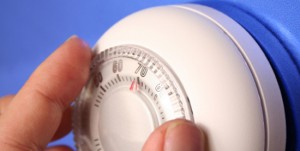With space heating and cooling accounting for 70% of domestic energy requirements heat pumps have fast become the darling of the energy efficient housing industry. Take space heating and cooling out of the equation and you’re way on the way to a zero carbon home.

Heat pumps use the time proven refrigeration cycle that we all have in our refrigerators and freezers to transfer heat from a source such as the ground the air or water through a heat distribution circuit to an internal space. They can work in both directions heating the space in winter as well as cooling in it summer.
A refrigerant is driven around a circuit comprising an evaporator compressor condenser and an expansion valve.
Heat pumps will consume electricity since it is required by the compressor. However for every one unit of electricity used somewhere between 2 and 4 units of heat is produced.
Photovoltaic panels, which are particularly effective in Spain because of the amount of sunshine, can be mounted contributing electricity to the grid compensating for the electricity used in the compressor thus achieving carbon neutrality.
Heat pump systems will be at their most effective when combined with at least some elements of passive design such as super insulation, an airtight envelope, an under floor radiant distribution and a mechanical heat recovery and ventilation. In fact a holistic approach should produce far higher levels of comfort with much cheaper running costs than conventional, I prefer to say outdated, systems.
Ground Source Heat Pumps
With a ground source system the earth absorbs a large proportion of the incident solar radiation which helps to ensure that the ground stays at a relatively stable temperature all year round. Air source systems cannot offer the same year round efficiencies since the ambient air temperature is far more variable. This means that their efficiency tends to drop off just when there is a demand for heat.
Air Source Heat Pumps
With air source heat pumps there are obvious space benefits since the unit sits outside the building and most other infrastructure works will be internal. A ground collector however will require a substantial amount of space since they will either use a vertical boreholes or horizontal trench depending on the land available, local ground conditions and excavation costs.
Water Source Heat Pumps
This is the least common of the heat pumps but spring water lake or pond sourced systems potentially offer the best coefficient of performance. Water source heat pumps will only be practical in a small number of applications.
Author: John Wolfendale
Bio: John is a founder of Eco Vida and is passionate about bringing modern design and construction practices to Spain. He believes a home which is warm in winter and cool in summer is largely a matter of design and selective use of materials. He is British and a Chartered Surveyor with 18 years experience living and working in Spain.

